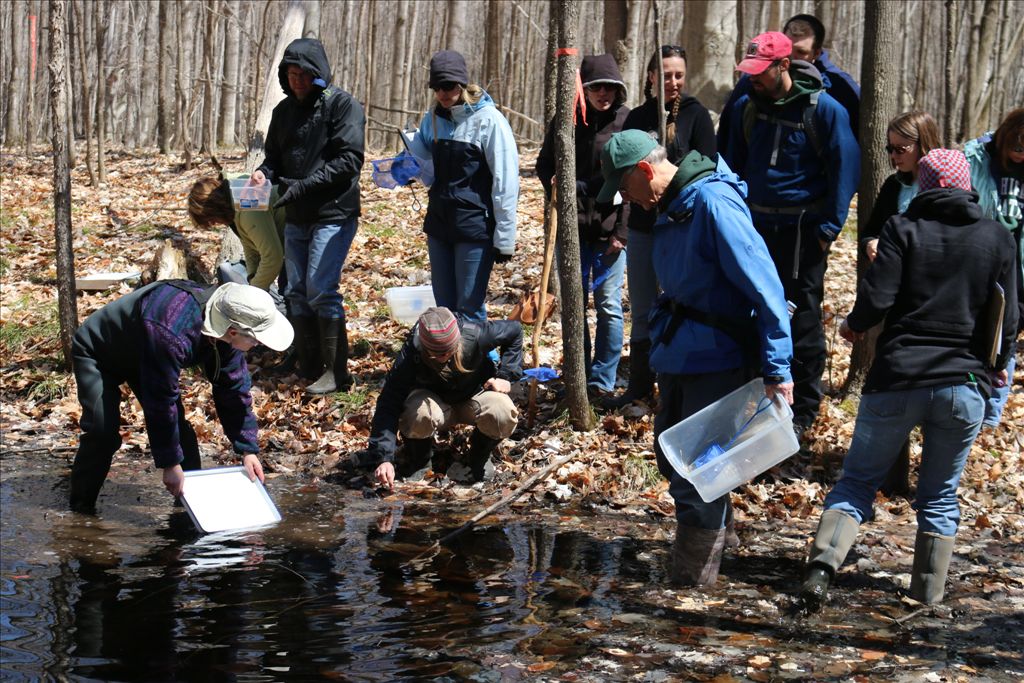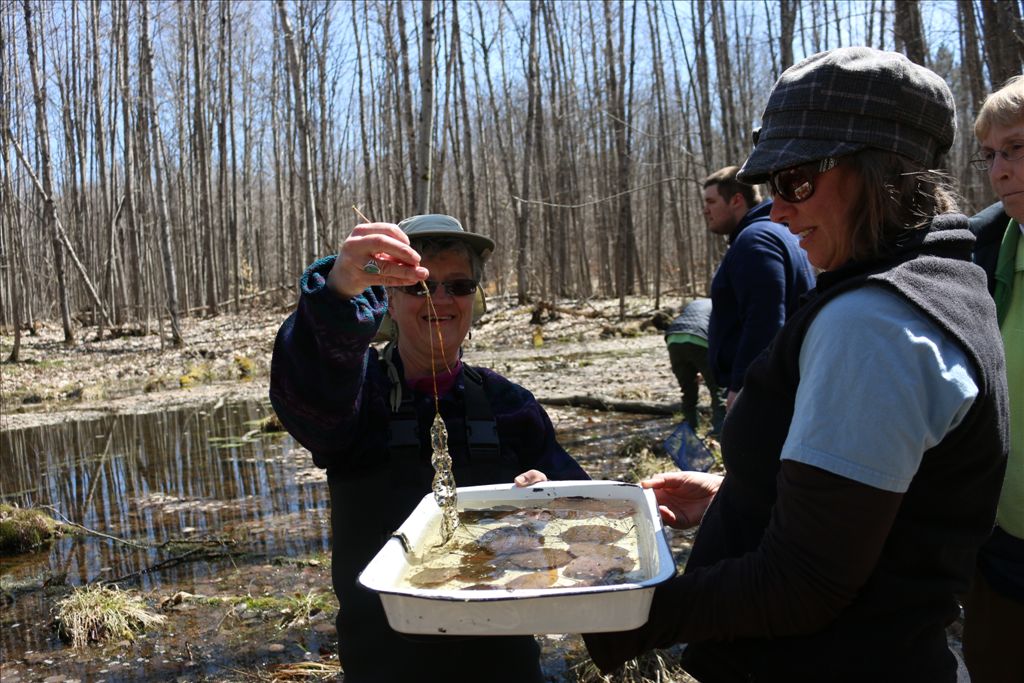Across Northern Michigan, students are monitoring vernal pools to help the Michigan Natural Features Inventory better understand the status of these seasonal wetlands. Vernal pools are seasonal wetlands which provide a unique home to both aquatic and terrestrial wildlife throughout the wet and dry periods. With this monitoring project, students visit a vernal pool site throughout the year (including when the pool is filled and dry), and acting as citizen scientists, they collect data related to species found and the vernal pool area and characteristics. This data will contribute to a statewide vernal pool database that will help the public, land managers, and scientists better understand and protect Michigan's vernal pools.
This effort includes many schools, community partners, and even other GLSI regional hubs across Michigan. It demonstrates how these different partners can work together and collaborate to increase our understanding of Michigan's vernal pools!
To get more information about field surveying, click here to access the K-12 Vernal Pool Patrol Monitoring Program outreach materials.
Project Components and Timeline
Early - Mid-April
Teachers interested in participating in the Vernal Pool Patrol Project/Program attend Vernal Pool Training Workshop. Training workshop will include both classroom and field components. Participants will learn about vernal pools and the Vernal Pool Patrol Program. Participants interested in participating in the project/program will sign up with MNFI. MNFI staff will work with interested teachers to identify a vernal pool for students to monitor.
Mid-Late April
For classes that started monitoring in the fall or are ready to start monitoring in the spring, students receive a classroom overview of spring vernal pool ecology, inhabitants and monitoring protocols. Students conduct first spring monitoring field visit to collect data about vernal pools. Students walk or are bussed to a vernal pool. Time is weather-dependent. Students starting to monitor in the spring will complete pre-program evaluation prior o the classroom visit.
Late April/Early May
Two to three weeks later, students return to the same pool to repeat data collection (to ensure all species inhabiting the pool are documented). Timing is weather dependent.
Mid-Late May
Students enter, analyze, and summarize data from spring field visits (and fall field visit if conducted). Students enter data into online. Students prepare presentations on the importance, methods, and results of data collection. Other types or avenues for students to present and share results from vernal pool monitoring and what they learned with the broader school and/or local community are also encouraged. Student complete program evaluations to assess impact of program or knowledge and attitudes. Teachers complete evaluation to provide feedback on program.
June/July
Teachers submit vernal pool data from monitoring visits to MNFI. MFNI reviews data and enters data into statewide vernal pool database. MNFI reviews student and teacher evaluations to improve upon project.
July - September
Teachers interested in participating in the program in the fall contact MNFI. MNFI staff works with teachers to identify a vernal pool site for the class to monitor, review program, and coordinate classroom and field visits.
September - October
Students complete pre-program evaluation prior to any vernal pool instruction. Students receive a classroom of the Vernal Pool Patrol Project and fall vernal pool ecology, inhabitants, and monitoring protocols. Students conducts fall monitoring field visit to collect data about vernal pools when they are dry. Students walk or are bussed to the pool. Teachers provide feedback and adjust for spring visits.
Michigan Natural Features Inventory Contacts:
- Yu Man Lee, leeyum@msu.edu
- Daria Hyde, hyded@msu.edu




